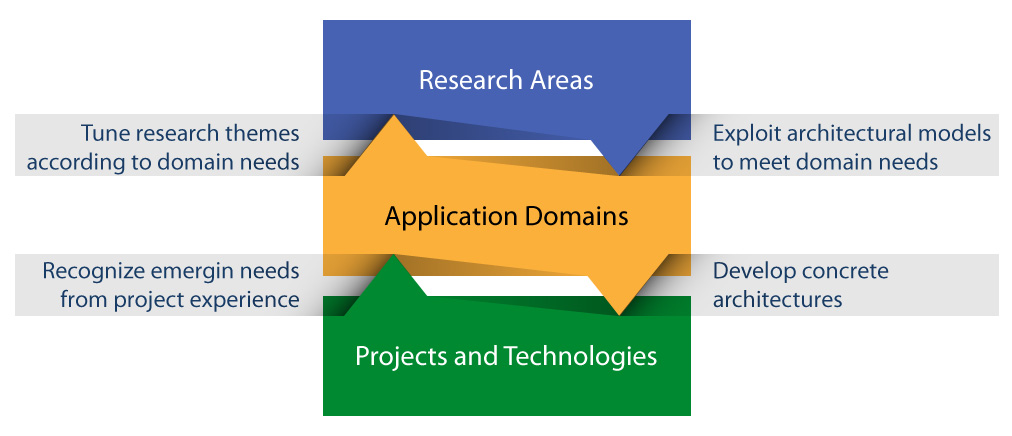Space Awareness
Space awareness is the system capability of locating objects in virtual or physical spaces and of behaving according to spatial locations.
The main objective of SAL is to define, develop and experiment architectural models, methodologies, and tools facing the challenges of emerging application domains.
SAL activities range from base research to applications including:

Space awareness is the system capability of locating objects in virtual or physical spaces and of behaving according to spatial locations.
Time Awareness is the property of being able to deal with time-related aspects as first-class concepts.
In many real situations, applications are required to adapt themselves dynamically to variations of resource availability, network connectivity, and other changes that may influence their performances.
The research field concerning techniques able to recognize and monitor human activities is very active in recent years. Such techniques can be applied in several application domains spanning from leisure to health care. To further contribute to the worldwide collection of accelerometer patterns, we make publicly available a new dataset of smartphone accelerometer data, named UniMiB SHAR (UniMiB Smartphone-based Human Activity Recognition). The dataset was created with the aim of providing to the scientific community a rich and complete dataset of acceleration pattern captured by smartphones to be used as a common benchmark for the evaluation of human activity recognition techniques.
Smart Environments (SEs) are ordinary environments augmented with input devices (e.g., sensors, vision and tracking systems, tangible and wearable interfaces) and output devices (e.g., screens, lights, speakers, mechanical actuators) that are able to sense and respond to the users which inhabit them. Applications include: smart homes (i.e., domotics), smart buildings and smart artistic environments
Ambient Intelligence (AmI) regard the creation of environments enhanced with sensors and actuators as the basis for surveillance, smart homes and in general Smart Environments
We face some well-known issues related to the Robotics field from the perspective of a software architect.
Supporting avant-garde forms of Art which use digital technology as artistic medium like Augmented Installations, Choreography and Theatre
Internet-Of-Things (IoT) is the term used for indicating a new generation network of fine-grained interconnected objects, where devices (e.g., sensors and actuators) may communicate with human beings and with other devices.